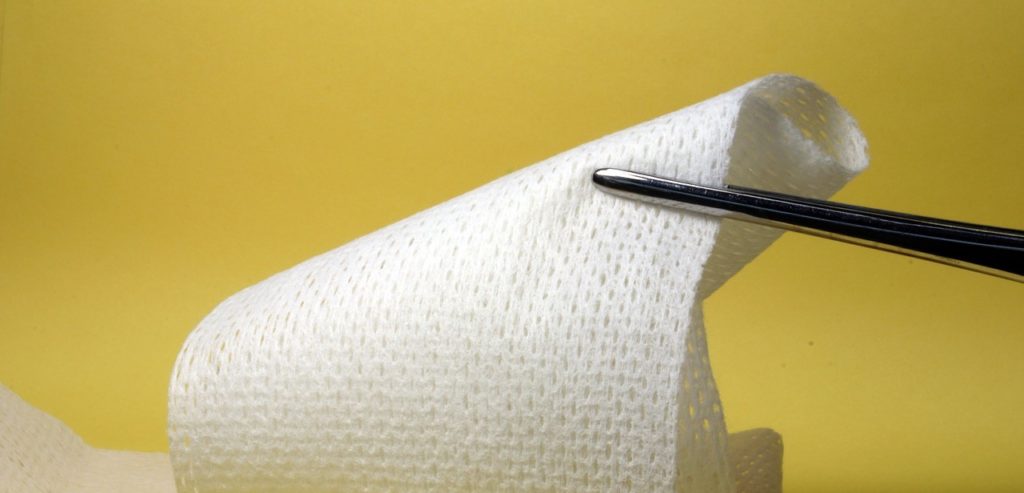FREE Shipping on Orders over $89 with Account – Create One Today!
- (844)-859-9400
- Get Help

One of the oldest, most tried-and-true methods of wound covering, gauze has been in use by medical professionals for many decades. In fact, it is believed that gauze style fabric has been used in one way or another to treat injuries since ancient times. It is truly remarkable that, despite innumerable medical advances, it is still considered a vital part of the modern wound care arsenal. There’s a good reason for this longevity.
Today’s medical gauze pads come in a variety of sizes and permutations, but they all serve essentially the same set of purposes. First and foremost, it provides a wound with protection from the elements and, sometimes, from infection. In many cases, gauze is also used to absorb exudate from open, draining abrasions.
In general terms, gauze refers to a textile woven in a stable, yet loose and open weave. It’s uncertain exactly where and when this type of fabric originated, but it’s been made from many different fibers and used for many different applications over the years. These include clothing, book binding and, of course, wound dressings.
Many years ago, someone realized that gauze fabric, when made with cotton, was especially useful for dressing wounds, burns and other injuries. Where other types of textiles would tend to stick to open lacerations, the loose weave of gauze allowed for excellent absorption and much cleaner removal during dressing changes.
As time went on and the field of medicine progressed, gauze remained a go-to tool in helping to heal all types of injuries. Like lots of other commodities, it began to be mass-produced during the Industrial Revolution, leading to even more widespread use. Then, in the 19th century, a very important innovation was made that changed the course of medicine, and gauze, forever.
In the 1860’s, an English surgeon named Joseph Lister became the first medical professional to hit on the idea of sterilizing his surgical gauze, along with other surgical tools. In doing this, he decreased his patients’ mortality rate by nearly half. Then, in the 1890’s, Johnson & Johnson made individually packaged, sterile gauze sponges widely available for the first time. In the decades since, basic, woven gauze has remained fundamentally unchanged.
Today, sterile gauze is sold wrapped in packs of single or multiple pads or rolls. The individual packaging prevents contamination from outside sources of germs or bacteria. For this reason, only sterile gauze should be used when treating open wounds.
Of course, old-fashioned non-sterile gauze is still in use and available today. It’s often used for cushioning bruises or covering other types of wounds. In roll or tube form, it can do double duty as a compression bandage and as a securement for other dressings.
Non-woven gauze is, in a strict sense, not really gauze at all. Instead of being a woven textile, it’s made from fibers that resemble a weave, but are in fact pressed together and condensed. The resultant tight pattern helps it absorb more wound exudate. Like it’s woven counterpart, it is available in sterile and non-sterile packaging.
Essentially developed to solve some of the inherent problems with traditional gauze, the non-woven variety tends to be made from poly blends, rather than natural cotton. This cuts down on the fluff and lint often given off by woven gauze, which can be harmful and delay healing in open wounds.
As mentioned above, gauze is especially useful for dressing wounds where other fabrics might stick. To improve this anti-adhesive quality, many modern varieties of medical gauze are covered with a porous film such as Telfa, or with another poly-blend which prevents direct contact between the fabric and the moist, open wound. They can also be impregnated with various oil or petrolatum emulsions (mixtures) to promote healing, such as in Xeroform or Gentell.
Regardless of the particular form it takes, great care should be used in keeping the gauze as sterile as possible between opening the package and placing it on an open wound. Therefore, it’s best to handle the pad/roll/etc with only well-washed hands or sterile gloves.
… regarding medical gauze or any other type of would care product, contact Medical Monks Customer Support via email, phone or LiveChat. We’ll always do our best help you choose the product that’s right for your particular situation. For more in-depth concerns, always consult your medical professional.
